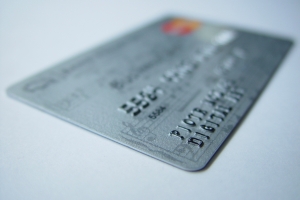 Is one of your New Year’s resolutions to get your finances in better shape? Or manage your expenses more accurately? Maybe it’s both…or more. The good news is there are plenty of powerful, smart, and free apps to try out for the New Year. Here’s a roundup of some of the most talked-about ones by finance experts. All are free and available for iOS (iPhone), Android, and some for Windows.
Is one of your New Year’s resolutions to get your finances in better shape? Or manage your expenses more accurately? Maybe it’s both…or more. The good news is there are plenty of powerful, smart, and free apps to try out for the New Year. Here’s a roundup of some of the most talked-about ones by finance experts. All are free and available for iOS (iPhone), Android, and some for Windows.
Personal Finance
No surprise that Mint.com is one of the most popular personal finance sites out on the market. Its app offers a secure way to track all of your accounts and credit cards in one location on the go. You can slice and dice account data to create graphs that show you the bigger money picture. You can also set alerts and reminders.
Dollarbird works from a calendar-based design to track expenses and income and also allows you to set up recurring transactions and bill reminders. You can also get a snapshot of where your money is going and even create a five-year financial projection plan.
Credit Cards and Check Management
Billguard monitors those “gray charges” on your credit card statements. It flags questionable or unwanted purchases and highlights merchants who frequently charge for products or services that are unnecessary or oddball fees.
MintBills (formerly Check) This app lets you pay checks from your mobile phone, either manually or by scheduling automatic payments. It also monitors bank or credit card accounts and notifies you if your checking account balance or credit limit is at risk.
Monitor everything about your credit score with the CreditKarma app. Get notifications if and when there are changes to your credit report and a “report card” on factors impacting your credit score number.
Take the work out of expense reports
Hate keeping tracks of your work expenses? Most find it painful. Whether you’re a small business or employee, Expensify makes it easier with the ability to scan receipts, track mileage, and even link debit and credit cards. You can view usage and even create expense reports. Travel bonus: it allows you to set up currency converters and flight alerts.
For the online shopper
Slice offers its own version of “one stop shopping” for all of your online purchasing needs: track packages, view your spending habits, and also find out if there are price reductions that you can claim with a merchant after the purchase date. It also provides shopping insights and consumer recalls information.
Sharing the cost?
We all know how fun it is to split dinner three ways (or more). Square Cash makes it easy to link your debit card to the software and securely send and request money through email. You can beef up online protection with a security code too. Transactions typically take one to two business days.
Another big player in this market is Google Wallet. It allows you to send money to any user in the U.S. You can also track online orders and view your purchase history when you have the free Google Wallet Card.
So get ready, set, and app up for your personal finance needs in 2015.








